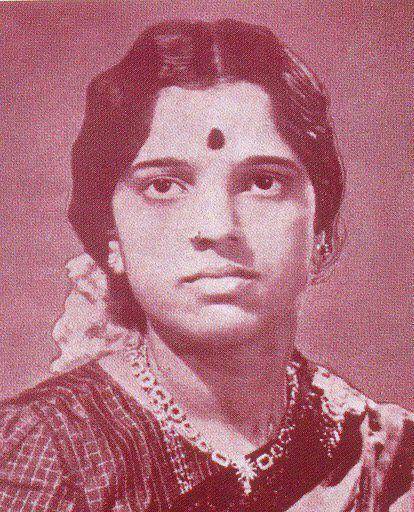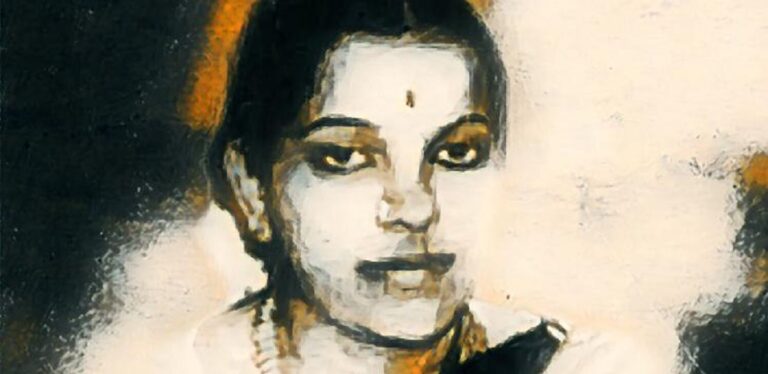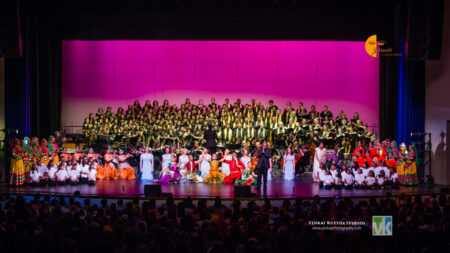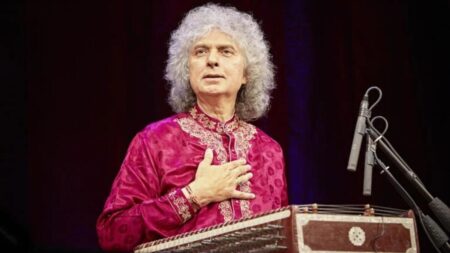NC Vasanthakokilam gave competition to MS Subbulakshmi, but died early. Today is the Carnatic musician’s anniversary.
Teenaged NC Vasanthakokilam moved to Madras when the city had just become home to MS Subbulakshmi, her professional rival soon. Vasanthakokilam shared her year of birth with DK Pattammal, another Carnatic icon. In 1940, when the singer branched out into cinema, ML Vasanthakumari debuted on stage.
The professional rise of Vasanthakokilam, unlike the three others, ended abruptly. She died young, high on popularity. Tuberculosis consumed the vocalist’s life at age 32. That was on this date (November 7) in 1951.
Further, the year 2020 marks the end of the birth centenary of Vasanthakokilam, who could have become part of a foursome along with MS, DKP and MLV.
Expanding her initials will reinforce the artiste’s identity as a Tamil. Nagapattinam Chandrasekharan. The port city by the Bay of Bengal, though, wasn’t her place of birth. Her parents had returned to Cauvery delta when the girl was a toddler.
Vasanthakokilam was a native of Kochi kingdom in Kerala. In fact, her original name was Kamakshi. She spent her childhood days near the temple town of Irinjalakuda. Her Vellangallur village is in present-day Thrissur district, according to the musician’s nephew Kunnath Madom Ramachadran, a culture enthusiast-journalist.
Vocal training
Kamakshi’s father Chadrashekhara Iyer wanted the girl to learn Carnatic. The family wanted her to earn a name in the classical system. Nagapattinam that time had a reputed musician in Jalra Gopala Iyer.
‘Jalra’ got attached to his name owing to Iyer’s proficiency in the clash cymbals. He was busy playing the high-pitched instrument at Harikatha. Those days, this sing-and-recite art-form was popular across southern India. It enthralled audiences with stories from Hindu mythology in a format interspersed with dance as well.
The young artiste’s vocals began to acquire much of the characteristics associated with Harikatha. Her voice had a foraying quality. She could easily traverse the three octaves. Much of her later recordings showed the artiste’s penchant for revelry in the top registers. Even there, she could retain the Carnatic frills.
When Kamakshi looked set to fetch fame, the family chose to leave Nagapattinam as well. The status of Madras as a cultural hub wooed her to the city in 1936. That was the year Subbulakshmi, too, reached there from the temple town of Madurai.
Music in Madras
Early recognition awaited the Nagapattinam woman. The sweetness of her voice struck listeners as that of the nightingale. Or the kokilam, whose coos pierce the spring air. Hence the new name Vasanthakokilam.
The teenager soon got busy. In 1938, she won the first prize at the prestigious annual conference of Madras Music Academy. Among the eminent figures to notice her artistry were the Yuvaraja of Mysore (as the sponsor) and musician Ariyakudi Ramanuja Iyengar. The “rising star” performed on the opening day of the event, notes art historian Sriram V.
Soon, Vasanthakokilam became a rage across the music circles of Tamil Nadu. She performed across the region, including at the illustrious Tyagaraja Aradhana in the birthplace of the Carnatic composer (1767-1847).
Vasanthakokilam, incidentally, had an unviable first marriage. “Ambitious and with her goals clearly set, she parted from her husband and pursued her career with devotion and tenacity,” says Sruti magazine. “The poor man set up a modest restaurant (called ‘coffee club’ in the Tanjavur district lingo) in Tiruvaiyaru. Whenever Vasanthakokilam came to that town for music concerts during the popular Tyagaraja Aradhana festival, he would shut shop and vanish from the town.”
The vocalist did, later, find a compatible life-partner. That was from the world of filmdom.
Vasanthakokilam’s tryst with movies
In 1940, just out of her teens, Vasanthakokilam got a break in cinema. It began with Chandraguptha Chanakya. Not only did she sing to the songs tuned by illustrious Papanasam Sivan, Vasanthakokilam also acted as Princess Chaaya in the historical film.
The flick was produced by CK Sachi (Sadasivam), who had done a film course from London and was a Coimbatorean cousin of writer RK Laxman. Sachi and Vasanthakokilam became close subsequently and married.

Vasanthokokilam went on to act and sing for seven movies that decade. Her last such engagement was Krishna Vijayam (1950). Her musical talent and skills were as good as that of Subbulakshmi, according to film scholar Randor Gury. Even so, Vasanthakokilam lacked the looks and charisma or the “X-factor” which her rival had aplenty, he adds.
Alongside the movie-lent glamour, she continued her Carnatic career. At home gatherings too. Violinist MS Anantharaman, for instance, had Vasanthakokilam giving a concert at his wedding on January 26, 1950 (overlapping with India becoming a republic), according to the late maestro’s instrumentalist-son MA Sundareswaran.
Madurai-born vocalist Anathalakshmi Sadagopan (1928-2013), who excelled in both Carnatic and Hindustani, used to admire how Vasanthakokilam “sang with a lot of confidence, particularly in her raga alapana and swaraprastaram.” Even in her year of death, Vasanthakokilam sang at Tyagaraja Aradhana.
The legend’s Vellangallur cousin K Sundar Ram, too, died of TB (in 1966). “Perhaps it is in the DNA,” winds up his son Ramachandran.




